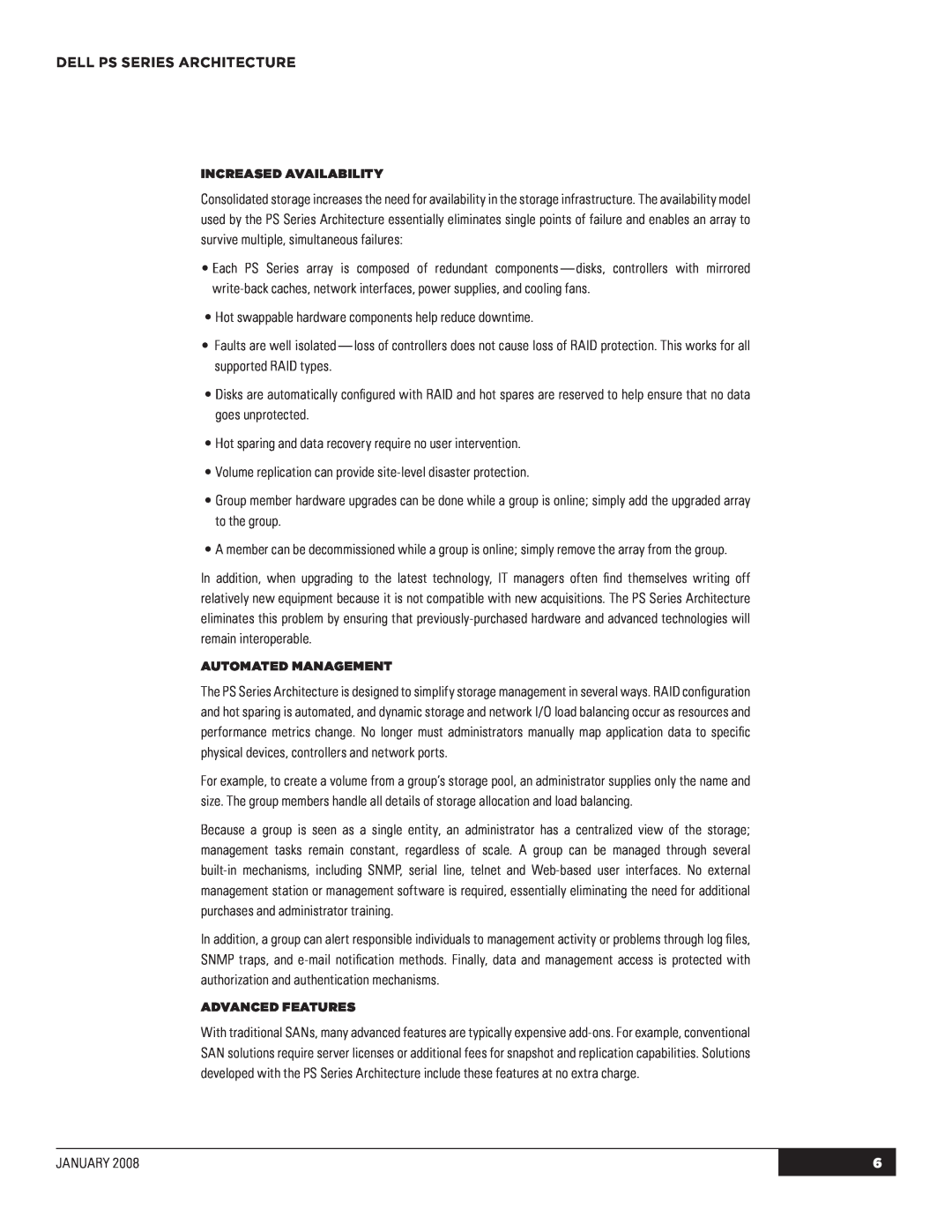DELL PS Series architecture
Increased Availability
Consolidated storage increases the need for availability in the storage infrastructure. The availability model used by the PS Series Architecture essentially eliminates single points of failure and enables an array to survive multiple, simultaneous failures:
•Each PS Series array is composed of redundant
•Hot swappable hardware components help reduce downtime.
•Faults are well
•Disks are automatically configured with RAID and hot spares are reserved to help ensure that no data goes unprotected.
•Hot sparing and data recovery require no user intervention.
•Volume replication can provide
•Group member hardware upgrades can be done while a group is online; simply add the upgraded array to the group.
•A member can be decommissioned while a group is online; simply remove the array from the group.
In addition, when upgrading to the latest technology, IT managers often find themselves writing off relatively new equipment because it is not compatible with new acquisitions. The PS Series Architecture eliminates this problem by ensuring that
Automated Management
The PS Series Architecture is designed to simplify storage management in several ways. RAID configuration and hot sparing is automated, and dynamic storage and network I/O load balancing occur as resources and performance metrics change. No longer must administrators manually map application data to specific physical devices, controllers and network ports.
For example, to create a volume from a group’s storage pool, an administrator supplies only the name and size. The group members handle all details of storage allocation and load balancing.
Because a group is seen as a single entity, an administrator has a centralized view of the storage; management tasks remain constant, regardless of scale. A group can be managed through several
In addition, a group can alert responsible individuals to management activity or problems through log files, SNMP traps, and
Advanced Features
With traditional SANs, many advanced features are typically expensive
january 2008 | 6 6 |
|
|
